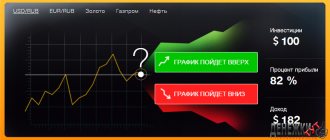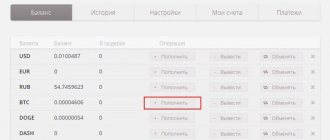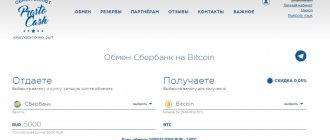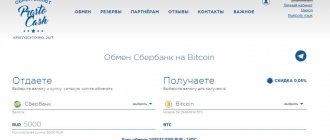- home
- Investments
According to Warren Buffett, stocks should be bought “forever.” After all, only long-term investments can neutralize the risk of fluctuations in stock market prices.
Author of the article:
Evgeny Smirnov
Article navigation
- Super Investor Rule: Buy a company's business, not its shares.
- How to choose stocks to invest in
- The most profitable stocks
- Undervalued shares
- TOP 10 joint-stock companies in Russia and the world in 2022
- What shares are the largest management companies in Russia buying?
Securities are a powerful financial instrument that allows you to receive passive income without much effort. But to be successful, you need to know how to choose stocks to invest in. For example, Warren Buffett prefers to acquire the assets of those companies whose products he uses. His main strategy is long-term investing.
Before evaluating a stock, Buffett carefully studies the issuing company's reports and conducts fundamental analysis, so he is always able to distinguish actual ups and downs in the value of securities from stock market speculation. In addition, he constantly searches for undervalued stocks. Thanks to this strategy, Warren Buffett made a huge fortune and became the most famous trader in the world.
Buy shares online
Super Investor Rule: Buy a company's business, not its shares.
Sometimes company owners do not have enough equity capital to implement their planned development strategies, so they attract funds from investors who receive a certain share in the business as a reward. The size of this share is determined by the share - a security. It assigns to the investor the rights to a specified part of the company’s assets and allows him to:
- receive interest on profits;
- take part in business management;
- receive your share of assets in the event of liquidation of the company;
- dispose of the share at your own discretion (donate or sell it).
The company has the right to issue ordinary and preferred shares, but the share of the latter should not exceed 25%. The difference between them is as follows:
- Ordinary (JSC) allow the investor to take part in the management of the company and receive dividends from net profits. But he may be left without income if the board of directors decides to allocate all the funds earned to business development.
- Preferred shares (PS) do not give the owner the right to participate in the management of the company, but in return he receives guaranteed dividend income that does not depend on the issuer’s performance.
You can make money on shares in two ways: receive dividends or take advantage of changes in the exchange rate of their value. The size of dividends is not fixed and depends on the decision made by the meeting of shareholders. That is, some companies may pay shareholders 5% of their profits, while others may pay 50%. But given the fact that a company usually spends most of its income on development, it makes no sense to count on dividends of 80–90%. In the Russian market, the average payout is 7–10%, and in the USA 1–3%.
When using the second method, you should select shares for investment only those that have a low value, which should increase in the future, and then the assets can be sold at a profit.
An individual can buy shares:
- In banks. Almost all major financial organizations sell their securities, and some of them also provide brokerage services, giving investors the opportunity to buy and sell shares of partners.
- On the exchange. Transactions with securities are carried out exclusively on stock exchanges, where a private individual does not have access, so he will need a broker - an intermediary company.
- From issuers. Some companies choose not to list their shares on stock exchanges, so they can only be purchased in person or through a broker. As a rule, the issue of securities is carried out by local authorities, commercial joint-stock companies, enterprises with a share of state capital, and investment funds.
- From other owners. One citizen has the right to sell or gift his shares to another, but such a transaction must be reflected in the corresponding entry in the owner’s register, which can only be done by a broker.
Transactions with securities themselves do not require special knowledge, but in order to choose which stocks to invest in, you need to study the principles of fundamental and technical analysis. In the first case, they examine how political and economic factors, world and regional events, the emergence of new products on the market and the success of the development of the enterprise as a whole influence the quote. Technical analysis takes into account previous price changes, the level of demand and supply. The past performance of a stock does not guarantee future growth in its value.
The comfort of the investment process depends primarily on the right choice of broker. It is recommended to select applicants after studying their reliability ratings. You should also pay attention to:
- broker rates;
- whether he has access to domestic and international trading platforms;
- trade turnover for the last year;
- minimum personal deposit amount;
- method of replenishing your account and withdrawing funds.
A novice investor usually does not have broad economic knowledge that allows him to make absolutely correct decisions about purchasing or selling shares. In addition, few people are willing to invest money in little-known enterprises at first. To evaluate a company for investment, you need to pay attention to the following criteria:
- Reliability and reputation of the issuer. Companies that have been on the market for more than one year value their reputation, so they will not reduce the size of dividends without reason or stop paying them altogether.
- Expected return. An investor who wants to preserve his capital is satisfied with a return that exceeds inflation. If he wants to increase his wealth, then he should look for an issuer with expected high profits. On the Russian market it is 10–20%.
- Liquidity of shares. This indicator determines how quickly you can get rid of acquired assets without losing your money.
- Financial position of the issuer. It is impossible to find out how well a company is staying afloat without conducting fundamental analysis. Therefore, before investing in shares of any enterprise, an investor needs to find out the size of its receivables, as well as find out how stable the profit is and whether its growth is expected.
- The economic sector to which the company belongs. Even stable and successfully developing enterprises may not show profit growth in some years. This is due to the fact that at different times the demand for certain services and goods also varies. Accordingly, companies offering more popular products will be able to earn greater profits.
How to identify such moments: a useful index
One simple tool I use is the free CNNfeargreed Index (Fear and Greed Index). This index shows the state of the market. When it's in the zero "absolute fear" zone, that's the best time for me to buy.
There are a million different techniques, but for a beginner, one option is to track the greed and fear indicator of the crowd.
It has 100 values, and when it is around 10, you can buy. At this time, all amateurs are afraid to buy and sell their assets. If it shows more than 80, then you can sell. This is my main secret.
Last March he was 5-7, which is absolute fear. Those who bought then are doing very well now. In the fall, he showed 80 - extreme greed. That is, this is a good time to sell.
The diagram shows that when the market is in so-called euphoria, that is, at its peak, this is the time of maximum risk for investing in stocks. And when he is in a panic attack, that is a good time to enter.
So those who don’t want to bother too much can always look at this index. Now the value was 50, that is, the market could go down, or it could go up.
This is a mathematically derived formula. If the majority of options traders are for the positive, then we see the so-called “greed”. If they cut positions, we see "fear" or even "extreme fear." For example, the market recently fell on March 9, but continued to fall and fell in a way no one could have predicted on March 23. Because emotions went wild and people could no longer watch their capital fly away. They started selling their funds. And when a person sells a fund, if he has a Tesla share in his portfolio, then nine more shares of other companies go with it. He sells his share, and the stock company must sell nine other shares. Hence the domino effect.
Determining that the market is falling is very simple. The price today is lower than it was yesterday - this is the main sign of a falling market, and this trend has been developing over a certain period of time. This is influenced by negative sentiment in the markets, lower prices, and uncertainty in the future.
I’ll say this about the CNNfeargreed index: I believe that there are no universal indicators that would suit everyone. They are always selected on an individual basis.
Overall, the speaker had an interesting, inspiring experience, but you need to understand that such a strategy may not suit everyone.
I believe that you can look and understand this indicator, perhaps someone will find the key to success in this. But in general, it is worth treating universal advice quite critically.
For new investors, it is best to look at long-term trends. I note that the speaker focuses on fairly distant horizons; this is not day trading. He develops a position over several weeks, and it is a positive experience.
It is worth paying attention to the formation of a personal strategy. Decide on your budget, your income and expenses. Based on this, understand which form of investment will be most acceptable. And decide for what period you will invest, how often you will set aside funds for investment, what kind of profitability you expect. For example, for some, a loss of 10% of capital is very significant and unacceptable.
You need to decide on these parameters, and the tools with which to work: indicators, fundamental analysis - this can be selected by attending any training course. For some, the stock market is suitable, and for others, the bond market. Everything is individual. But first of all, these are your expectations regarding profitability and budget planning.
How to choose stocks to invest in
It is not easy to find bright investment ideas among Russian securities. This is due to the fact that the country is not experiencing strong economic growth rates. In addition, there are practically no companies that arouse the clear interest of investors. Therefore, when choosing an issuer, you should carefully monitor the scope of its activities and take into account recommendations for purchasing shares.
According to experts, promising industries in 2022 include:
- finance;
- mechanical engineering;
- gas, oil and gold production;
- food enterprises.
Shares of financial organizations and engineering enterprises are in good demand, since the turnover of such issuers is constantly growing and makes them quite attractive for novice investors.
Gold mining companies issue the most profitable stocks. Their value is secured by the precious metal, the price of which remains stable in any economic crisis. The food sector also has enormous potential, since food is a sought-after product. Revival in this market segment is observed even during a crisis, so anyone can make decent money by investing in Dodo Pizza, RusAgro or any other food company.
Experts advise investing in those enterprises that have been successfully operating in the market for a long time. A novice investor should understand that changes in stock prices do not happen on their own. This usually happens as a result of certain events, for example, expansion of production, product announcement, change of company management. Investors should be wary of dividends that are too high. This is often an indication of heavy withdrawals and business closure in the near future.
You can understand which stocks are worth investing in using various indicators. The main one is the ratio of the total value of issued shares and the company’s profit - P/E . A value from 0 to 5 is considered normal. Raw materials-extracting enterprises have lower indicators, and high-tech companies have higher indicators.
Another ratio is P/CF . It represents the ratio of the total value of issued shares and the amount of cash that remains in the company after paying all expenses, that is, the ratio of capitalization and cash flow. A small value of this ratio indicates that management is leaving a sufficient amount of money within the company. They should be enough to pay dividends, buy back shares or expand production.
The third ratio is P/BV , or the ratio of the value of all shares to the book value of assets. The lower its value, the better the conditions for investing.
The last indicator is P/S , the ratio of stock price to revenue. A value less than one is considered optimal, but pitfalls should be taken into account. There are companies with gigantic volumes of revenue, which provide only 3–7% per annum in profit.
Invest with a purpose
Passive investing is boring because it's passive.
The investor tries to minimize the number of transactions - this allows him to pay the manager less and eliminate the human factor: with proper diversification, the portfolio grows on its own, along with the market. All you need to do to follow this strategy is to regularly replenish your portfolio and periodically rebalance. And there are no action-packed stories: a passive investor does not call the broker shouting “Sell everything!”, does not become a billionaire overnight, and does not lose everything after one catastrophic mistake. The best minds advise not to follow the market at all. And so the passive long-term investor needs a goal. Few people are able to repeat the same routine actions for years without receiving tangible rewards here and now. The goal provides the necessary motivation and the opportunity to evaluate your success in concrete numbers: “I have saved half the amount to buy a house by the sea” sounds like a good reason to open the broker’s application again next month and top up your account.
The goal also has a completely rational function: it is a key element of the investment strategy. Having correctly formulated the goal, you can draw up an action plan for the entire investment period: how much you need to accumulate, by what date, what structure to choose, how to adjust for inflation, how often and how much to replenish the portfolio, and so on.
Distribute assets
While diversification is inherent in ETFs, an effective investor with a passive strategy extends this even further and invests not only in different assets within the same market, but also in different asset classes - stocks, bonds, commodities and money market instruments.
Modern Portfolio Theory (MTP) suggests that by combining high-yield risky instruments with lower-yielding but less risky instruments, an investor can achieve greater returns without changing the overall level of risk. This is the main goal of diversification.
Another important principle is to choose assets with low or inverse correlation. For example, gold and stocks. When stocks fall in price, gold rises and vice versa.
Even greater diversification can be achieved by investing in markets of different countries. Developed countries offer safer securities with moderate returns, while emerging markets potentially have higher returns but also higher levels of risk.
Rebalance regularly
Depending on the goal, planning horizon and individual risk tolerance, the investor forms a strategy with the desired portfolio structure. For example, a moderate risk 10-year portfolio might include 50% stocks, 40% bonds and 10% gold. But without special efforts on the part of the investor, this ratio is unstable. In a favorable market situation, the shares in the portfolio will rise, and in the event of a crisis, they will fall. Gold, which is inversely correlated with stocks, tends to move in the opposite direction. In turn, bonds behave more stable, but their share in the portfolio depends on the investment horizon and the risk profile of the investor.
Over time, the mix of asset classes in a long-term portfolio will change, and its risk and return will deviate from the chosen strategy. Let's say that after a year, stocks have risen in value by 30%, gold has fallen by the same amount, and bonds have retained their original value. This means that the portfolio as a whole grew by 12%.
Stocks: 50 + 15 (+30%) Gold: 10 – 3 (-30%) Bonds: 40 Portfolio: 65 + 7 + 40 = 112 Growth: +12%
At the same time, the ratio of assets in the portfolio has changed. Now stocks account for 58%, bonds - 35.7%, and gold - only 6.3%. To restore balance, the investor must buy more bonds and gold, otherwise the portfolio risk will remain higher than planned.
We must also remember that as we get closer to the goal, the risk level of the portfolio should decrease. A year before you buy that same beach house, you can't afford a big drawdown due to a sudden drop in stocks. By this time, the portfolio should consist primarily of bonds.
Take advantage of tax benefits
An important factor for investor success is cost reduction. They consist of two parts: the first is the commission of the manager, broker and trading platform, the second is taxes.
The first one is simple. Active portfolio management involves a large number of transactions, and therefore high commissions. And even if the fund manager ends up being one of the few that beat the market, the high fees may not justify the gains. Index ETFs, on the contrary, have low commissions, and the number of transactions on the site is kept to a minimum. So half of the optimization goes to us for nothing.
But the investor must take care of taxes on his own. For example, he can open an IIS - this is a special brokerage account that will allow him to receive a tax deduction. Another type of tax optimization is benefits for long-term ownership of securities (LTS). As the name suggests, they are specifically aimed at supporting passive investing and extend to ETFs as well. Without using tax benefits, an investor reduces the efficiency of his investments.
Following these rules allows an investor to fully utilize the potential of index funds. In conclusion, let’s say one more simple but important rule: no matter what happens, you need to remain calm and stick to the plan.
The information in the text does not constitute individual investment advice. Investments involve risk. An individual portfolio for a goal, risk and horizon can be created in a robo-calculator
What else to read:
Diversification in simple terms: types, properties and recommendations for long-term investors Is it worth rebalancing your investment portfolio? How to create an investment portfolio based on your goal and risk in 3 steps
The most profitable stocks
For many investors, one of the main reasons for investing in stocks is to earn dividends. The Russian market also contributes to this. In terms of dividends, it is one of the most highly profitable. Therefore, in 2022, it is better to invest money in shares of leading Russian companies that provide shareholders with more than 10% of the value of their assets. The maturity of the business, the absence of costly projects and the level of profit allow them to direct a significant amount of money to pay dividends. These are companies such as MMC Norilsk Nickel, PJSC Severstal, GlobalTrans, Detsky Mir, MTS.
Unlike the States, there are no companies in Russia that have consistently increased dividends over many years. Even typical dividend organizations often stop paying or reduce payments.
Reliability and high profitability are guaranteed by shares of Russian state-owned companies that have great growth potential. They will be the leaders in the Russian Federation in terms of liquidity in the next three years. This conclusion can be drawn by analyzing the financial management policy of the Ministry of Finance. According to the document entitled “Main Directions of Budget, Tax, Customs and Tariff Policy ,” the growth rates of dividends on shares of companies with state participation from 2022 to 2022 should exceed 100%.
There are two industries where the state takes a very active part in management: oil and gas and banking. Experts advise investing money in shares of Gazprom, Rosneft, Sberbank, and VTB in 2022. In addition, Gazprom and Rosneft are export companies. They receive revenue in foreign currency, so they have little dependence on the exchange rate of the Russian ruble, and if difficulties arise (crisis, sanctions), the state, which is the main shareholder, provides them with significant support.
To get maximum income, it is better to buy shares of a company with a transparent dividend payment structure and a steadily increasing dividend payout. You need to choose reliable issuers that have great growth potential, confirmed by financial documents. These include:
- Nizhnekamskneftekhim. You can earn over 13% per annum on shares of this company in 2022;
- Surgutneftegaz – up to 15%;
- Tatneft pays investors 47 rubles per share, or 5.19% per annum;
- Alrosa planned dividends in the amount of 5.88 rubles per share (10.23% per annum);
- Children's World - 8.71%.
You can buy these shares here →
Undervalued shares
A stock is considered undervalued if its market value is below what it should be based on fundamental analysis (fair value) or expert opinion (optimal value). Papers may be underpriced for a number of reasons. For example, due to low demand for products due to their unpopularity in the market or the unstable profitable history of the enterprise.
Sooner or later, shares of undervalued companies rise to the required value, so the investor can sell them for a multiple profit. Young companies in the market have the greatest growth potential. But when buying their shares, you need to carefully analyze the reasons why they were undervalued. If a company has an excessively large debt load or fundamental problems in management, then the low price of assets will gradually become fair and the investor will not be able to make money.
Undervalued assets are most common among cyclical companies. Their income drops sharply in some periods, so the value of their shares decreases. When profits increase, securities rise in price again.
It is profitable to buy shares and invest money in undervalued enterprises because in the long term they can bring the investor more profit than ordinary and even the most successful corporations. The main thing is to find securities with undervalued prices and buy them at the time of extreme recession.
Fundamental analysis techniques and Benjamin Graham's theory are used to search for undervalued assets. This allows you to determine at an early stage which companies are worthy of attention and which are unpromising. In fundamental analysis, several multipliers are used. None of them on their own is capable of providing an objective assessment, but together they help to find truly promising assets.
The selection of stocks for investment according to the classical scheme using the Graham coefficient is carried out in the following sequence:
- Selection of companies with suitable multipliers.
- Calculation of the coefficient itself.
- Comparison of selected assets.
Graham, in his book The Intelligent Investor, suggests valuing a company using the following multiples:
- P/B – shows the undervaluation of the company relative to the value of its assets. To calculate it, you need to divide the market price of the stock by the book value of the assets. The value must be less than 0.75.
- P/S – shows the profitability of the company. Its value can be found by dividing the share price by the revenue per share. This coefficient must be less than 0.5.
- P/CF – the ratio of the market value of one share and the volume of working capital must exceed 0.1. This means that the company has sufficient liquid assets and is able to satisfy the demands of creditors.
- The debt to capitalization ratio must be less than 0.1. If a company has a lot of debt, then an investor should not get involved with it.
In addition, the investor needs to monitor the average daily trading volume - it should be at least 100 times the amount of the planned purchase. Otherwise, the investor will not get the most promising shares, but illiquid assets that are unlikely to be sold at a favorable price in the future.
After preliminary selection of undervalued securities, you can proceed to calculating the Graham ratio. To do this, you need to subtract debts from the value of the company's assets and divide the resulting value by the number of issued shares. The result is the value of net current assets - NCAV (Net Current Asset Value).
The Graham ratio itself does not say anything, except that a negative value indicates that the company is unprofitable. To understand whether a stock is undervalued or overvalued, you need to find the ratio of its market value and the ratio. The purchase of a security is considered appropriate if its cost is approximately 2/3 (66.7%) of the Graham ratio. Some investors allow a ratio in the range of 50–80%, but to minimize risks it is better to accept 60–70%.
To quickly find the most undervalued shares of Russian companies, you can use screeners - special Internet services for selecting issuers according to specified criteria. For example, TradingView. After downloading it, you just need to set the necessary parameters so that the system itself selects the necessary papers. They can then be quickly sorted using various filters.
If there are more shares than needed, a new selection should be made using more stringent settings. If there are not enough issuers, then each of the parameters must be weakened by 10%. In addition to the specified screener, there are many others - Market In Out Technical Stock Screener (marketinout.com), Finviz Free Stock Screener (finviz.com), etc.
Safe stocks available on the American Stock Exchange for long-term investment
ℹ️ 10. Costco Wholesale (NASDAQ: COST)
Costco Wholesale (NASDAQ: COST) is a Washington, D.C.-based firm that operates membership-only retail stores. It operates in the US, Puerto Rico, Canada, UK, Mexico, Japan, Korea, Australia, Spain, France, Iceland, China and Taiwan. The products the company offers include packaged foods, groceries, beverages, cleaning supplies, electronics, and a variety of other items. It has approximately 800 warehouses worldwide. It also has an e-commerce website to sell the same products online.
Its market capitalization is over $160 billion and annual revenues exceeded $166 billion in August 2022, up from $152 billion the previous year. The company was founded in 1976 and ranks tenth on our list of 10 safe stocks to invest in for the long term. Earlier this month, the company increased its dividend by 12.9% to $0.79 per share from $0.70 per share. Investment bank UBS said last month that it expected Costco shares to outperform as the economy reopens from the pandemic.
ℹ️ 9. Verizon Communications Inc. (NYSE: VZ)
Verizon Communications Inc. (NYSE: VZ) is a multinational telecommunications company headquartered in New York City. It has interests in the technology, information and entertainment sector. The products the company sells include postpaid and prepaid service plans, wireless equipment and fixed-line solutions for the home. The company has more than 94 million wireless connections and more than 7 million broadband connections. It was incorporated in 1983 and ranks ninth on our list of 10 safe stocks to invest in for the long term.
Its market capitalization is over $238 billion and its annual revenue in December 2022 exceeded $128 billion. Earlier this week, the company announced it had expanded its 5G fixed internet services to 21 more cities in the United States. The service was previously available in Houston, Los Angeles and Chicago. 5G internet is marketed as an alternative to traditional cable internet because of the speed benefits it brings in addition to its wireless capabilities. The company offers a ten-year price lock for consumers who want to subscribe.
ℹ️ 8. American International Group, Inc. (NYSE: AIG)
American International Group, Inc. (NYSE: AIG) is an insurance company headquartered in New York. It sells its products to commercial, institutional and individual clients around the world. The firm offers general liability, environmental liability, commercial automobile liability, accident and crisis insurance, and other insurance services. The company sells products through insurance agents, financial advisors, banks and broker-dealers. The company was founded in 1919 and is number eight on our list of 10 safe stocks to invest in for the long term.
Its market capitalization is over $40.9 billion and annual revenues exceeded $43 billion in December 2022, up from over $49 billion the previous year. The company's share price rose more than 3% last month amid reports that billionaire Warren Buffett was increasing his stake in the company. Buffett has long argued that the success of his insurance business has led to his company becoming one of the largest in the world over the past few decades.
ℹ️ 7. General Electric Company (NYSE: GE)
General Electric Company (NYSE: GE) is a Boston-based multinational company with operations in aviation, healthcare, electronics, energy and other industries. The company's products include gas turbines, independent power producers, boilers, generators, steam turbines and air quality control systems; as well as advanced solutions in the field of reactor technology. The company has a renewable energy division that covers wind, blades, hydro, storage, solar and grids. The company ranks seventh on our list of 10 safe stocks to invest in for the long term.
Its market capitalization exceeds $119 billion and annual revenues in December 2022 were approximately $80 billion. Last month, Bank of America maintained a buy rating on General Electric shares with a $15 price target. The bank's analysts have projected a positive outlook for the company in 2021, with the company's investor base expected to expand in the coming years. A few weeks before Bank of America maintained its rating on GE, Deutsche Bank raised its price target for the company to $14 from $13.
ℹ️ 6. Starbucks Corporation (NASDAQ: SBUX)
Starbucks Corporation (NASDAQ: SBUX) is a Seattle-based company known for its chain of coffee shops around the world. The company's products include coffee and tea beverages, roasted whole bean and ground coffee, single-serve and ready-to-drink beverages, and iced tea; and a variety of food items such as baked goods, breakfast sandwiches and lunches. It operates more than 32,000 coffee shops around the world. It was founded in 1971 and ranks sixth on our list of 10 safe stocks for long-term investing.
The company has a market capitalization of more than $135 billion and reported annual revenues of more than $23 billion in September 2022, up from $26 billion the previous year. Earlier this month, London brokerage Atlantic Equities named Starbucks among its top picks for the quarter and gave it an Overweight rating. The brokerage cited Starbuck's expansion plans as one of the reasons for the high rating. The firm has set a $128 price target for SBUX.
ℹ️ 5. NIKE, Inc. (NYSE:NKE)
NIKE, Inc. (NYSE: NKE) is an Oregon-based company that designs, develops, manufactures, and internationally markets and sells footwear, apparel, equipment, accessories and services. NIKE also produces sportswear designed for children and other sports. The company was formerly known as Blue Ribbon Sports and changed its name to NIKE in 1971. It was founded in 1964 and ranks fifth on our list of 10 safe stocks for long-term investing.
The company has a market capitalization of more than $200 billion and reported annual revenue of more than $37 billion in May 2022, up from $39 billion the previous year. Earlier this month, the company announced it would begin selling refurbished sneakers as part of a program to expand into overseas markets. On April 7, investment bank UBS selected NIKE as one of its favorites for the quarter, maintaining a Buy rating on the Oregon-based firm amid a positive outlook for the retail sector as the economy reopens after a difficult 2022.
ℹ️ 4. Procter & Gamble Company (NYSE: PG)
The Procter & Gamble Company (NYSE: PG) is a multinational consumer products company headquartered in Ohio. It focuses on the beauty, body care, healthcare, textiles and home care sectors. The firm operates in North and Latin America, Europe, Asia-Pacific, Greater China, India, the Middle East and Africa. The products the firm offers include conditioners, shampoos, styling products and deodorants, among countless others. It sells these products through mass merchandising, e-commerce and wholesalers. The firm was founded in 1837 and ranks fourth on our list of 10 safe stocks for long-term investing.
Its market capitalization is over $333 billion and annual revenues exceeded $70 billion in June 2022, up from $67 billion the previous year. Earlier this week, the company increased its dividend by 10% to $0.87 per share. Last month, leading investment bank Morgan Stanley selected Procter & Gamble as one of its top picks for the year as the company's earnings per share growth outperformed peers in the personal care sector. Morgan Stanley also noted growth in the Ohio firm's baby care sales.
ℹ️ 3. Visa Inc. (NYSE:V)
Visa Inc. (NYSE: V) is a Francisco-based financial services company that makes it easy to transfer money electronically, primarily through Visa credit cards, debit cards and prepaid cards. The scale of Visa's operations can be seen in a 2015 report, which states that in 2014 the company processed more than 100 billion transactions worth more than $6.5 trillion worldwide. Since then, the company has grown and expanded into other sectors, including digital. currencies. Visa ranks third on the list of 10 safe stocks to invest in for the long term.
Its market capitalization exceeds $470 billion, and the company had annual revenues of more than $21 billion in September 2022, up from nearly $23 billion the previous year. Last month, the company announced the expansion of its Visa Direct Payouts service, which allows customers to use a single connection point to send payments, to make payments easier. Bill Sheley, the firm's senior executive, said the new payment system will make digital transactions easier and highlighted Visa's innovative approach to changing consumer behavior.
ℹ️ 2. Merck & Co., Inc. (NYSE:MRK)
Merck & Co., Inc. (NYSE: MRK) is an American national pharmaceutical company that produces drugs, vaccines, biologics and animal health products. The firm is best known for selling Keytruda, a top immunology drug used to treat cancer patients. The firm also recently joined the World Health Organization in recommending against the use of generic anti-parasitic drugs to treat coronavirus patients. It ranks second on our list of 10 safe stocks to invest in for the long term.
The firm has a market value of more than $200 billion and generates annual revenue of approximately $50 billion. The company's cancer drug alone generated at least $11 billion in sales last year. Last month, the company invested about $30 million in single-use manufacturing equipment at its research center in France. Earlier this month, it also completed its $1.8 billion takeover of drugmaker Pandion Therapeutics.
ℹ️ 1. Berkshire Hathaway Inc. (NYSE: BRK-B)
Berkshire Hathaway Inc. (NYSE: BRK-B) is a Nebraska-based holding company that owns several large businesses in the United States and also has minority stakes in many of the world's largest corporations. It was founded by Oliver Chace in 1839. The firm is the eighth largest publicly traded company in the world. The company is also popular because it is controlled by American business tycoon Warren Buffett. The investor is known for his long-term investments that yield handsome returns.
The holding company has a market capitalization of more than $611 billion and revenue in December 2022 of more than $245 billion. The company's stock price has risen more than 12% in six months. Earlier this month, the company announced it would offer yen-denominated bonds in multiple tranches and use the proceeds for general company purposes. The company added that the bonds issued will not be listed on any stock exchange.
We will continue our review of shares traded on American stock exchanges.
TOP 10 joint-stock companies in Russia and the world in 2022
According to Warren Buffett, stocks should be bought “forever.” After all, only long-term investments can neutralize the risk of fluctuations in stock market prices. The best stocks for long-term investing in 2022 are released. They are a particularly privileged caste in the stock market, since they are characterized by stability both in terms of risks and in terms of dividend payments.
The blue chip niche is led by domestic commodity companies. Of particular interest are investments in shares of Gazprom, Rosneft, Lukoil, and Surgutneftegaz. These companies are export-oriented, and their profits are weakly dependent on the ruble exchange rate. Rosneft today retains its leadership in oil production in the world, and Gazprom remains the leader in gas production. In addition, commodity companies are actually owned by the state, and this provides them with a high level of confidence among investors.
It is also profitable to invest in Lukoil . In Russia, every car owner knows this company. It provides shareholders with a high level of income due to the quality of its fuel and the trust of the government apparatus. Over the previous year, the price of Lukoil shares increased by almost 50%, and such dynamics have been observed for several years.
Now it is worth investing in shares of companies that belong to the metallurgical industry. Severstal, Norilsk Nickel, NLMK (Novolipetsk Iron and Steel Works), MMK (Magnitogorsk Iron and Steel Works) have excellent indicators. There are plans to increase production of various metals in 2022, which is good news for investors.
In the financial sector, Sberbank is a clear leader . Its never-ending business model compares favorably with its closest competitors and allows investors to make good profits despite the crisis. Experts advise investing in the shares of this bank, since their value is expected to increase by 20–25% in 2022.
The Russian stock market is quite young. It has existed since 1996, but has great prospects for growth, unlike the United States and Western Europe. The undoubted advantage of investing in shares of these countries is income in “hard” currency. A novice investor should buy shares (for the long term) of world-famous corporations, whose products are used in every home. A profitable investment is the acquisition of securities of companies such as Nivea, Gillette, Samsung, Apple, Microsoft.
And recently, Wall Street analysts named their version of the rating of the most promising investment options in stocks. The companies included DoorDash, Verra Mobility, Alteryx, MaxLinear, InMode.
Therefore, our TOP 10 promising stocks for 2022 are as follows:
- Gazprom;
- Rosneft;
- Surgutneftegaz;
- DoorDash;
- MaxLinear;
- Nornickel;
- NLMK;
- Sberbank;
- Apple;
- InMode.
Start investing
How to find safe stocks?
Since tech companies typically reinvest their dividends to increase share price, it becomes very difficult to identify safe stocks that provide consistent returns. There is even evidence that there is a bubble around tech stocks that is likely to burst and crash the market. Investment bank Citigroup's panic/euphoria index hit its highest level on record last month, indicating the market may be heading for a respite after a strong bull run in the first quarter of this year.
Speculation surrounding meme stocks earlier this year also impacted investor confidence in the second quarter, further fueling the move toward safe havens from growth stocks. In a time of skyrocketing value and huge market capitalization, as demonstrated by the recent public offering of Coinbase Global, Inc. (NASDAQ: COIN), you need to do your due diligence before investing in hyped firms. The shift to financial technology from traditional banking seems to have eased this climate of uncertainty.
In fact, the entire hedge fund industry is feeling the effects of the changing financial landscape. Its reputation has been tarnished over the past decade, during which its hedged returns have failed to keep up with the unhedged returns of market indices. On the other hand, the study was able to proactively identify a select group of hedge fund holdings that outperformed the S&P 500 index funds by more than 124 percentage points since March 2022. Between March 2022 and February 26, 2022, our monthly newsletter results have been returned. 197.2% compared to 72.4% for SPY. Our stock prices outperformed the market by more than 124 percentage points. We were also able to identify in advance a select group of hedge fund holdings that have significantly underperformed the market. We believe hedge fund sentiment is an extremely useful indicator that investors should pay attention to.
Let's take a look at 10 safe stocks to invest in for the long term.










